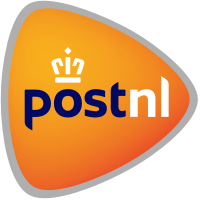ESU LokSound 5 micro.
Digitale geluidsdecoder voor modeltreinen.
- Steker: 8-polig NEM652
- Geschikt voor de schalen: TT/N
- Digitaal systemen: DCC met RailCom+ / M4 (MFX) / Motorola / Selectrix.
- Motorstroom: 0,75 A
- 6 versterkte functieuitgangen.
- 10 geluidsuitgangen tergelijk schakelbaar.
- Standaard geleverd met 11x15mm luidspreker.
- Optioneel is een PowerPack aan te sluiten.
- Afmetingen: 25,5mm x 10,6mm x 4,0mm
Technische gegevens over de LokSound 5 micro.
- Schakelbare functie's: 32 mogelijkheden.
- Prossesor: 32-Bit.
- Digitale Class-D versterker tot 3 Watt belasting.
- Luidspreker met 128 Mbit capasiteit.
- Motorregeling met 50kHz Takfrequentie.
- RC-Servo en SUSI-Module aanstuurbaar.
- 3 nieuwe aanstuurbare remregelaars.
- 2 verschillende vrachtbelasting aanstuuringen mogelijk.
- Updaten kan via de ESU LokProgrammer.
ESU LokSound 5 micro steker types en artikel nummers:
58810 - NEM652 8-polig.
58813 - Kabelboom (Losse draden op kleur)
58814 - PluX16.
58816 - NEM651 6-polig
58818 - Next18
Met geluid geleverd krijgen?
Dat kan ook. Wij leveren de ESU LokSound 5 ook met geluid. Deze laden wij dan naar wens voor u in. Hiervoor wordt € 9,99 extra in rekening gebracht. Wanneer u de decoder besteld krijgt u een keuze of de decoder zonder of met geluid geleverd moet worden. Automatisch zal de € 9,99 erbij gerekend worden. In het reactieveld bij het afrekenen kunt u uw gewenste LokSound keuze aangeven.
"Klik hier voor de lijst met keuzes"
Over de ESU LokSound 5.0 micro.
The LokSound 5 micro is actually a „small miracle“: With a footprint of 21mm x 10 mm it is by far the smallest LokSound decoder, which we have ever built. Thus it should fit into all N gauge and TT vehicles, but is also suitable for small H0 vehicles. All LokSound decoders are equipped with a Next18 interface and are available with adapter plugs to suit all popular digital interface types. The decoder is supplied with an 11mm x 15mm sugar cube speaker as well as a sound enclosure set.
Operating modes
The LokSound 5 micro is a true multi protocol decoder. It supports DCC as well as Motorola®, Selectrix® and M4. Of course it supports 14 through to 128 speed steps as well as 2 and 4 digit addresses in DCC format and up to 32 functions. Thanks to RailComPlus® the decoders register themselves fully automatically on suitable command stations.
This decoder supports all DCC programming modes and thanks to RailCom® you may read out the CV values on the main, provided you have a command station supporting RailCom®. There are utility registers for command stations that only facilitate programming of CVs ranging from 1 to 255.
Motorola® users benefit from up to 28 speed steps for 255 addresses. Three additional Motorola® addresses facilitate triggering of 16 functions. An integral programming mode even allows programming with the good old Control Unit 6021.
The M4 protocol supports the automatic registration on mfx® compatible central units.
The LokSound decoder supports the Märklin® braking sections just as well as the ZIMO® HLU braking commands or the Lenz® ABC system. Braking with DCC brake generators or with DC is also possible. Furthermore the locomotive with a LokSound will come to a halt when a Selectrix® braking diode is switched into the circuit. The ABC push-pull feature enables the automatic commuting between two stations.
The LokSound 5 micro decoder is also suitable for analogue DC and AC (!) layouts.
Sound
The LokSound 5 micro decoder can reproduce up to 10 channels simultaneously. Each channel offers up to 16 Bit / 31250 kHz and thus we have finally achieved hi-fi sound quality on your layout. For all practical purposes one cannot detect any difference to the original. A double class D audio power amplifier with up to 3W output power feeds the speakers with a permitted impedance of 4 – 32 Ohms. The huge 128 MBit sound memory assures sufficient storage capacity.
The volume of all individual sound fragments may be adjusted separately. The outstandingly flexible sound engine without a rigid flow chart facilitates a prototypical simulation of all conceivable rail vehicles. Three separately adjustable braking functions and two alternative load scenarios provide you with maximum control of your vehicles.
The volume of all individual sound fragments may be adjusted separately. The outstandingly flexible sound engine without a rigid flow chart facilitates a prototypical simulation of all conceivable rail vehicles. Three separately adjustable braking functions and two alternative load scenarios provide you with maximum control of your vehicles.
Functions
Despite its small dimensions the LokSound 5 micro decoder has at least 6 amplified function outputs as well as one logic output. There are two more logic outputs on the Next18 interface, which alternately may be employed to control RC servos. Of course, all important lighting functions are supported. The brightness of each output may be adjusted separately. The decoder supports the automatic push and pull movements – known as the coupler waltz - required for reliable operation of digital couplers such as the ones by ROCO® and Krois® as well as Telex® couplers.
Motor control
Motor control of the LokSound 5 micro has been further improved. A variable PWM pulse frequency ranging from 10 kHz to 50 kHz assures perfect silent operation, particularly for coreless motors. Thus the typical hum is a thing of the past. Load control can now be adjusted with up to 10 separate CVs and thus will manage even the most difficult cases. The unique “Auto Tune” function facilitates the automatic calibration of the decoder to perfectly match the motor. The LokSound 5 micro decoder supplies sufficient motor current (up to 0.75 A) for the intended applications.
LokSound 5 micro DCC
The LokSound 5 Micro DCC is made for the North American and Australian markets. It is a pure DCC Decoder, which supports RailComPlus and can also be used on DC layouts.








